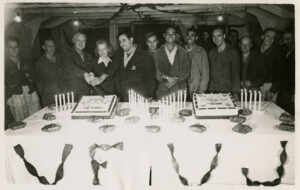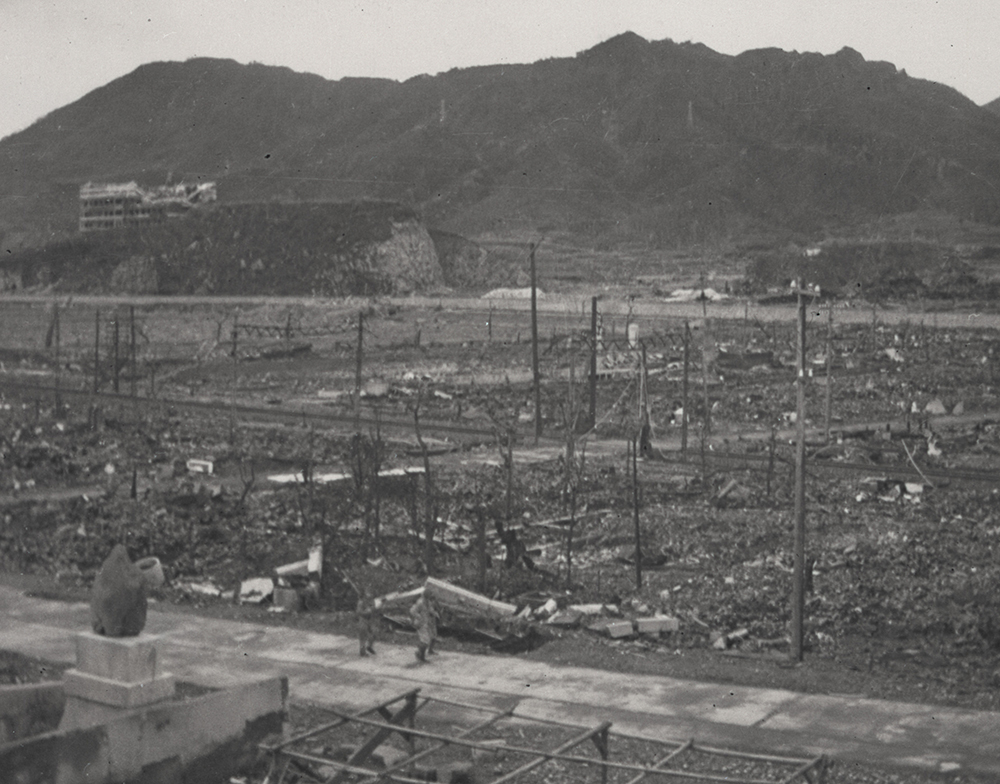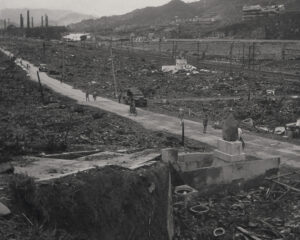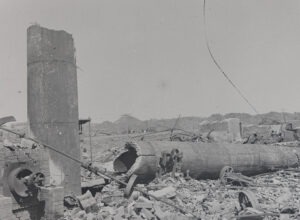The end of World War II brought elation for some. The staff and patients of the 21st General Hospital, the US Army reserve hospital staffed by members of the Washington University medical community, were almost certainly among those in celebration. The personnel of the 21st had served continuously since 1942 and shared an immense relief with the soldiers and civilians of the war-torn world that the conflict ended.

But the war culminated in the use of atomic weapons on the cities of Hiroshima and Nagasaki, marking the beginning of the atomic age. For many, the war’s end was only the beginning of unprecedented efforts to overcome the catastrophic damage it had brought and the threat of a future that was difficult to imagine.




Two graduates of the Washington University School of Medicine Class of 1938, Henry Barnett and James F. Nolan, were extremely familiar with the perils of the atomic bomb. They were members of the medical and radiation safety group at Los Alamos during the Manhattan Project and became part of the first group of Americans to enter Japan after the bombs were dropped. They arrived in early September 1945 along with other members of the Los Alamos medical team and other teams representing the US Army and Navy as part of what would come to be called the Joint Commission for the Investigation of the Effects of the Atomic Bomb in Japan.

The members of the Joint Committee visited both Hiroshima and Nagasaki. They worked closely at times with Japanese medical staff to understand the scope of the casualties and whether radiation from the bombs would continue to be a hazard. Japanese doctors including Masao Tsuzuki, the leading Japanese authority on the biological effects of radiation, would also become official members of the Joint Committee.
Though they often traveled with Red Cross physicians to lend desperately needed medical aid, the American Joint Committee members were supplied primarily with Geiger counters. Tragically for those people who had been subjected to the initial radiation from the explosions, there was little that could be done. Even though the survey team was in Japan a month after the bombings, they saw victims from the bombings who would die weeks later from exposure to the bombs’ initial radiation and the subsequent radioactive fallout. While the Joint Committee discovered that residual radiation in the environment continued to decline, the long-term health effects of the bombs could only be guessed.
After seeing what Nolan later called “utter devastation of the kind that is difficult to imagine” he and the other team members met with Japanese officials at a small ceremony at the Itsukushima shrine near Hiroshima. One of the Los Alamos scientists, Stafford Warren, made an impassioned toast “to the future peace between all nations and the hope there would be no more war again.”
In October 1945, Crawford F. Sams, research physician and Brigadier General in the US Army, was made Chief of the Public Health and Welfare Section of the General Headquarters, Supreme Command Allied Powers. Sams was also a graduate of Washington University who received his MD from the School of Medicine in 1929. He was responsible for all activities pertaining to the health and welfare of occupied Japan.

In his oral history given in 1979 Sams recalled the daunting healthcare situation that the Japanese people faced after the war.
“[We] had fourteen and a half million refugees. … We had about two million and a half … homes destroyed. They had been short of food for several years because of the naval blockade. … [It was] the ideal situation for major epidemics to develop, and they already had started when we got there. … So we had a tremendous outbreak of typhus. Smallpox. We had, of course, the usual typhoid outbreaks and dysentery and so on. Diphtheria. …
“We tried to use this existing government, or what was left of it, but they were paralyzed at all levels. Then we tried to reorganize it and … make a peaceful, stable, democratic Japan and rebuild the nation. …
“I had to set up a state Health and Welfare Department. … At the same time, to control these epidemics I had to introduce new things. They had never used typhoid vaccine before, so you had to start mass immunizations. … This scale of thing had never been done before. You say, ‘How do you do it?’ Well, you just have to do the best you can with what you’ve got and have a sound medical knowledge as well as organizational capacity.”
Though 75 years have passed since the bombing of Hiroshima and Nagasaki, if we refuse to reflect on history, we run the danger of not only repeating past mistakes, but of ignoring solutions that helped transform the world from the brink of catastrophe. Arthur Compton, one of the lead scientists of the Manhattan Project who would become Chancellor of Washington University after the war, said of the new atomic age, “The world is alive with hopes and fears. But he also offered solutions for the challenges the modern world posed then which are still relevant now.
“The society that is adapted for survival in the modern world is one in which cooperation occurs between diverse groups spread over large areas. …”
“In a democratic society…, our citizens as well as our leaders need to understand something about the problems and human needs of all the nations…”
“Because of the critical problems that the release of atomic energy has helped to precipitate, urgent attention is needed to the education of wise leaders, to the cultivation of a desire to cooperate on our common tasks, and to the growth of a spirit of human service.”
